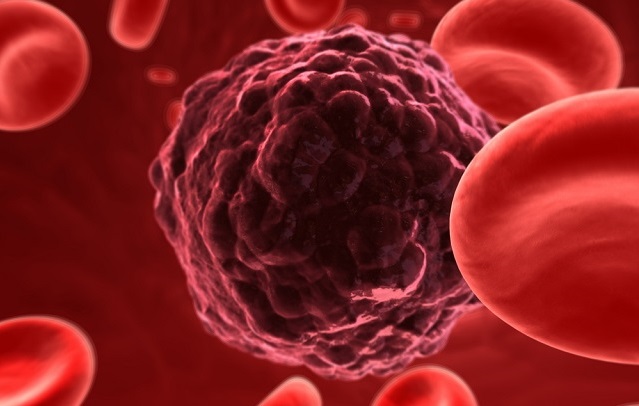Dec 9 2015
A novel cancer treatment has been developed that uses nanodroplets to deliver drugs to cancerous cells. The nanodroplets target cancers and once delivered to their target they release therapeutic drugs. The new technique has been shown to enhance the effectiveness of anti-cancer therapy.

Sebastian Kaulizki | Shutterstock
The 'nano-terminators' are created by introducing two different types of polymeric ligands (long-chain molecules that attach to specific molecules) to a liquid gallium indium alloy. Ultrasound waves are then introduced into the solution which cause nanodroplets, of roughly 100 nm diameter, to burst off the liquid metal's suface.
The advance here is that we have a drug-delivery technique that may enhance the effectiveness of the drugs being delivered, can help doctors locate tumors, can be produced in bulk, and appears to be wholly biodegradable with very low toxicity. And one of the advantages of this technique is that these liquid metal drug carriers -- or 'nano-terminators' -- are very easy to make.
Zhen Gu - NC State University
As the droplets breakaway from the bulk liquid metal, the ligands in the solution attach themselves to the droplet's surface. In addition to this the exposed metal on the nanodroplet surface is also oxidized by the air; resulting in the formation of a coating that surrounds each droplet. The combination of this oxidised coating and the ligands prevents the nanodroplets from fusing and re-joining the bulk liquid metal.
The two different types of ligand are key to the nanodroplets therapeutic properties. Whilst one of the ligands is designed to attach to an anti-cancer drug, doxorubicin (Dox), the other is designed to attach to receptors found on cancerous cells. This combination means cancerous cells can be 'found' by the nanodroplets carrying the anti-cancer drug, Dox.
When the cancer-targeting ligand attached to a cancer cell it results in the nanodroplet being absorbed into the cells interior. Once inside, the acidic environment of the cancer cell results in the breakdown of the nanodroplets oxidized coating. As the coating breaks down the other ligand, which is attached to the anti-cancer drug, is released. In effect this means Dox is only released in cancerous cells, and causes damage to them, reducing the damage caused by the drug to healthy tissue and increasing the drugs efficacy.
Without the oxidized skin and ligands, the nanodroplets fuse together, forming larger drops of liquid metal. These larger droplets are fairly easy to detect using diagnostic techniques, which can potentially help doctors locate tumors.
Michael Dickey - NC State University
As the Dox is released the reaction between the liquid metal and the cancer cell's acidic environment continues. This dissolves the metal, resulting in the release of gallium ions. These ions are instrumental in boosting the performance of the anticancer drug and their effectiveness in opposing drug-resistant cell lines. The long-term toxicity is mitigated by the dissolution of the bulk metal.
Based on in vitro tests, we believe the liquid metal degrades completely in a matter of days into a form that the body can successfully absorb or filter out, without notable toxic effects.
Yue Lu - NC State University
The effectiveness of the liquid metal model was tested in mice and it was found that drug delivery via the nanodroplets was more effective in impeding the growth of ovarian cancer tumors than by using Dox alone. After observing the micemodels for 90 days the team found that the liquid metal did not cause any toxicity.
This was a proof-of-concept study, but very encouraging. Like the fictional Terminator, this carrier is transformable: smashed from bulk material, fused inside cancer cells and eventually degraded and cleared. We are hoping to do additional testing in a large animal study to get closer to potential clinical trials.
Zhen Gu - NC State University
The research has been published in Nature Communications.